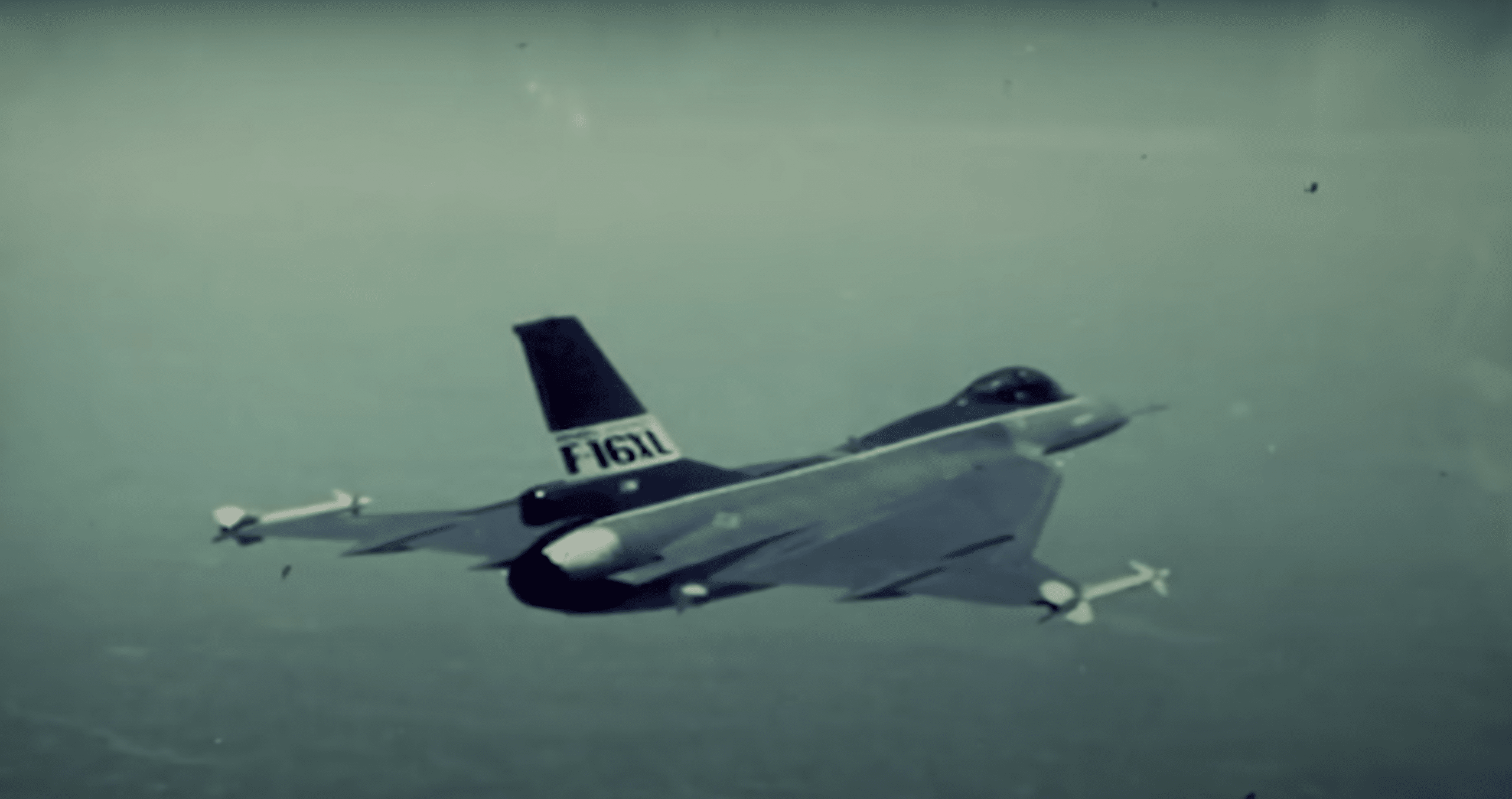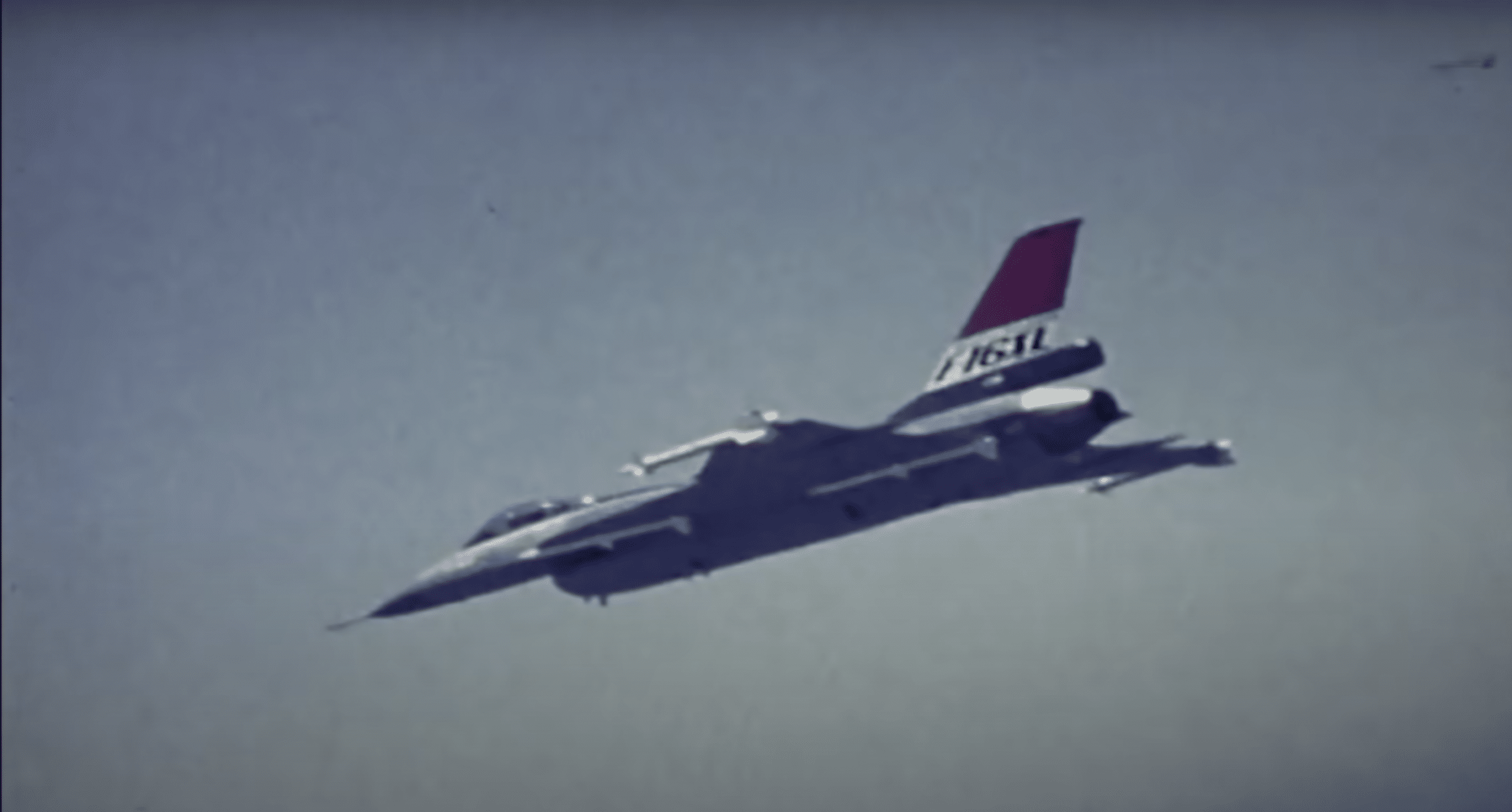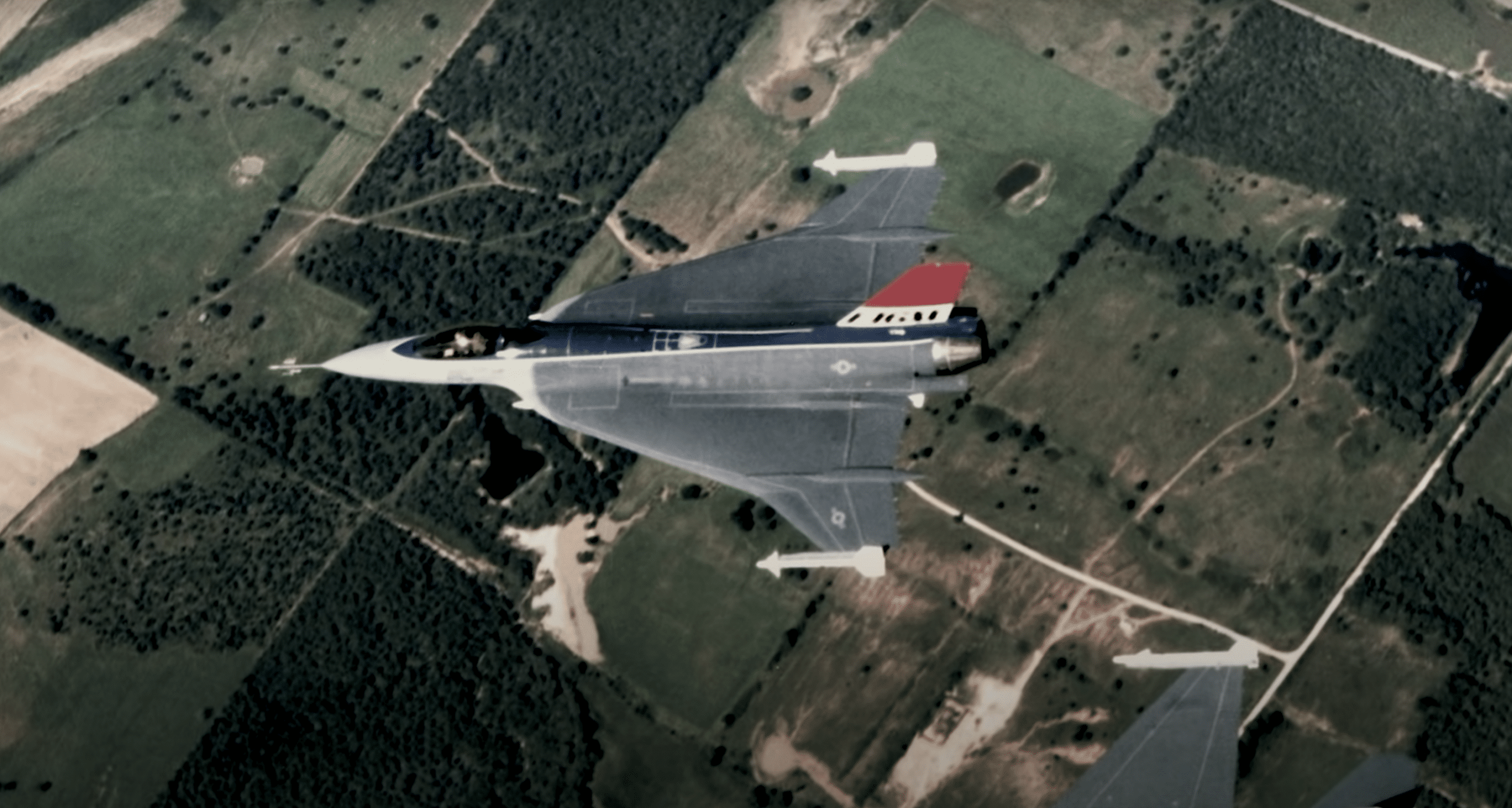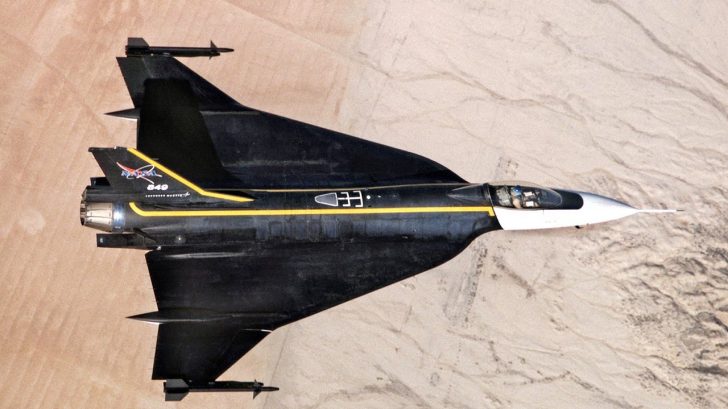The F-16 became famous for being an outstanding all-weather multirole aircraft. It was so good that over twenty nations adopted it after receiving several upgrades. But what if it got better?
Extra Large
The F-16XL was known as the F-16 SCAMP or Supersonic Cruise and Maneuver Prototype in 1977. Harry Hillaker, the father of the F-16, wanted to demonstrate the applicability of supersonic transport (SST) to military aircraft. To do so, he had to make a lot of changes.

Design Modifications
The F-16’s wings were replaced with a cranked-arrow delta wing that is 120% larger. Its fuselage was extended by 56 inches, while the ventral fins were removed to prevent them from hitting the runway.
Double The Firepower
The added surface area of the wings made it possible to carry twice the amount of ordnance (on 27 hardpoints) and deliver it 40% farther than before. Sixteen 750-lb missiles can be fitted on its underwings, two Sidewinders on the wingtips, and four AIM-120 missiles on semi-recessed positions. The remaining hardpoints could be used for fuel tanks, equipment, or other projectiles.

Results of the Changes
Its new wings and other changes improved its maximum lift-to-drag ratio in supersonic flight by 25% and 11% in subsonic flight. After a round of flight testing, it was reported that the XL version handled high speeds and low altitudes more smoothly than previous F-16 versions.
Against The F-15E
The F-16XL and F-15E entered the Enhanced Tactical Fighter program to replace the F-111 Aardvark. The program called for an aircraft capable of launching deep interdiction missions without support from escorts or jammers.

McDonnell Douglas eventually won the contract since the XL needed more effort, time, and money to produce. The F-15E was almost the same as its “D” variant and had two engines that gave it more thrust and the capability to have more weapons.


